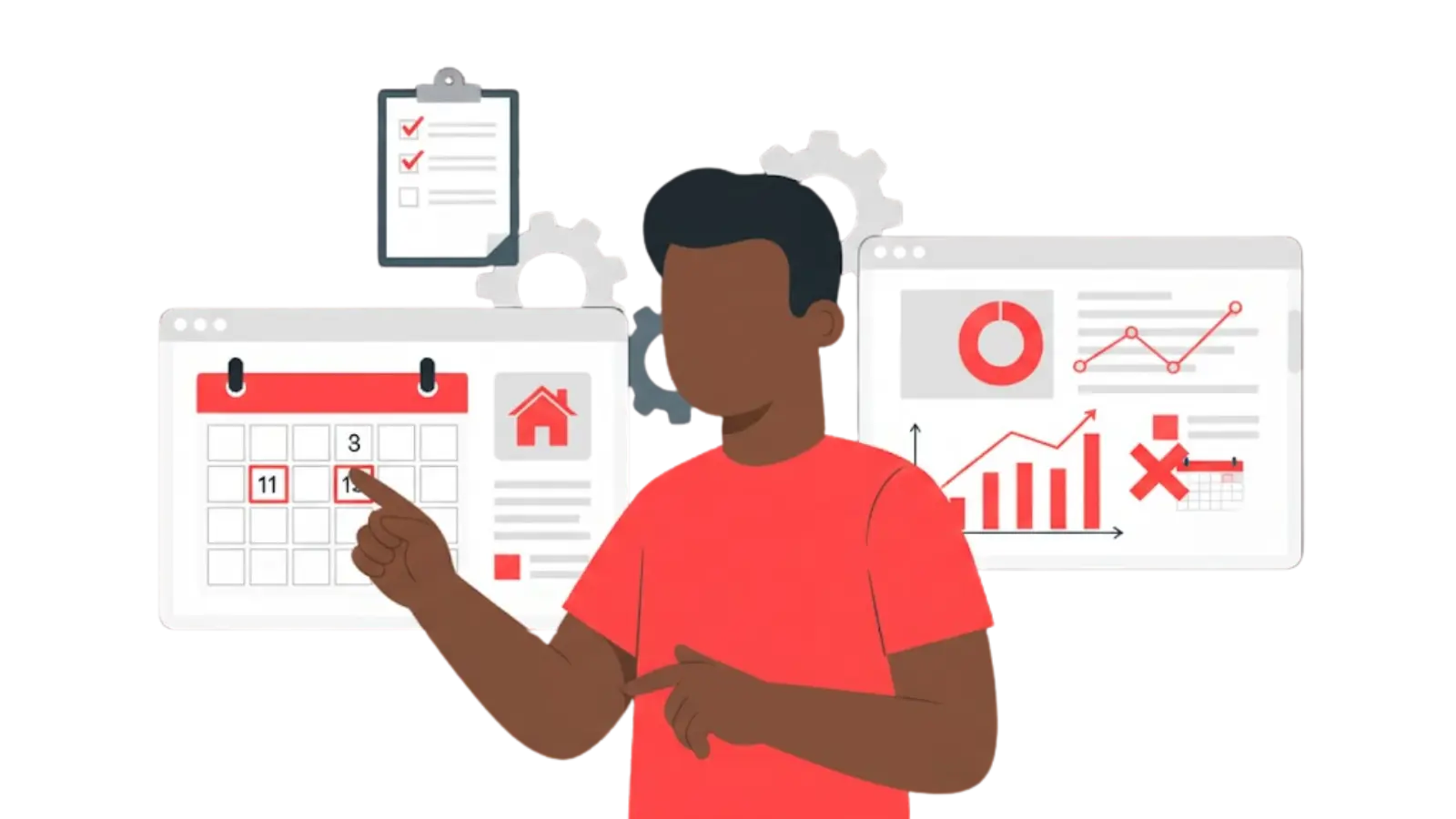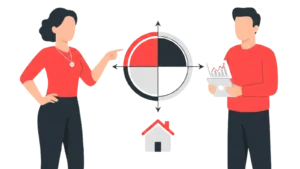Updated : Jul 14, 2025
Setting the right price on Airbnb can feel like a moving target. With new listings popping up daily, seasonal shifts, and fluctuating demand, even experienced hosts sometimes struggle to stay competitive. That’s where a smart Airbnb comparison tool becomes your best ally.
In this article, we’ll break down why price comparison matters, how to go beyond Airbnb’s basic tools, and how PriceLabs empowers hosts with deeper, data-driven insights. Whether you’re just getting started or scaling a portfolio, mastering price comparisons will help you optimize occupancy, boost revenue, and stay ahead of the competition.
Why Price Comparison Matters?
Your price is one of the first things potential guests notice—often before they even look at your photos or read your description.
Here’s why pricing strategy matters more than ever:
- Guests filter by price: Most travelers begin their search using the Airbnb sort by price feature to find options within their budget.
- Market competition is intense: With thousands of similar listings in any given area, even a $5 difference could shift bookings away from you.
- Dynamic demand: Local events, holidays, and even weather can affect pricing. Comparing prices regularly ensures you’re not undercharging—or pricing yourself out of the market.
Bottom line: You can’t set and forget your rates. You need a consistent Airbnb price comparison strategy that adapts to your market.
Limitations of Airbnb’s Native Tools
While Airbnb offers basic filtering and sorting options, they’re not designed for in-depth competitive analysis. Here’s what you’re missing if you rely on Airbnb alone:
- No side-by-side price comparison: You can sort listings by price, but there’s no clear view of pricing trends or how your listing stacks up.
- No data on occupancy or lead time: Airbnb doesn’t show how booked other listings are or when they’re typically reserved.
- No visibility into discounting strategies: You can’t easily tell if a competitor is offering last-minute or length-of-stay discounts.
- Filters are limited: You can’t filter listings by revenue, booking window, or performance metrics—only surface-level attributes.
To make informed, revenue-maximizing decisions, you need more than just the Airbnb interface.
How to Compare Airbnb Prices Manually?
Some hosts still prefer a DIY approach. If you’re starting out or just exploring your market, you can try manual comparison. Here’s how:
- Search as a guest: Input your location, dates, and number of guests. Then sort by price.
- Use filters: Narrow it down to listings similar to yours—same number of bedrooms, amenities, guest capacity, etc.
- Open tabs and take notes:
- Look at nightly rates
- Check cleaning fees and service fees
- Note their availability calendar
- Track over time: Repeat this process weekly to observe how prices fluctuate. Use a spreadsheet to log pricing patterns.
However, this method is time-consuming and lacks market-wide insights. That’s where an Airbnb comparison tool like PriceLabs makes all the difference.
Why You Need an Airbnb Comparison Tool?
Manual tracking only scratches the surface. A professional-grade Airbnb comparison tool gives you:
- Real-time data: See what similar listings are priced at right now, not last week.
- Market trends: Track how prices and occupancy change over time in your area.
- Revenue optimization: Spot gaps where you can raise or lower your prices without losing bookings.
- Smart automation: Set rules that adjust your prices dynamically based on competitive signals.
Instead of guessing, you get actionable data and more bookings at the right price.
What Are Comp Sets and Why Are They Critical?

A Comp Set (short for “Competitive Set”) in PriceLabs is a curated group of listings that you manually select for performance benchmarking. Unlike generalized market data that aggregates all listings in a city or neighborhood, Comp Sets allow you to isolate the listings that most closely resemble your own property in:
- Location and proximity
- Property type (entire home, private room, etc.)
- Bedroom and bathroom count
- Guest capacity
- Amenity configuration (e.g., pool, hot tub, kitchen, balcony)
- Quality signals (review score, Superhost status, listing photos)
How to Build a Custom Comp Set in PriceLabs?
Step 1: Accessing the Comp Set Interface
From the PriceLabs dashboard:
- Select the listing you want to analyze.
- Click into the “Market Research” tab.
- Scroll to the “Comp Set” section.
- Click “Create New Comp Set.” This opens the comp set builder.
Stay Ahead of the Market and Find the Right Amenities that Your Potential Guests Want Using PriceLabs Market Dashboard.
Use PriceLabs Market Dashboard and Neighborhood Data to track competitor pricing and demand shifts and analyze past performance to set a strong pricing strategy for your property.
Create your Market Dashboard NowStep 2: Identifying Comparable Listings
You can select competitors using two methods:
- Use the map to select the listings you want to track and benchmark against.
- Use geo-based search filters:
- Use the interactive map and search radius tools.
- Filter listings based on:
- Number of bedrooms and bathrooms
- Listing type (entire place, private room)
- Minimum night stay requirements
- Review count and average rating
- Calendar activity (updated within the last X days)
- Superhost or Premier Host status
These filters allow you to eliminate outdated or poorly managed listings that could skew your data.
Step 3: Validating and Selecting Listings
Each listing can be previewed before being added to your Comp Set. Review:
- Nightly pricing over time
- Minimum stay settings
- Booking lead times
- Calendar occupancy
- Last updated timestamp
Add listings that mirror your property profile and operational strategy. Avoid properties that differ significantly in size, location, or quality tier—even if they’re nearby geographically.
Step 4: Saving and Managing Your Comp Set
Once you’ve added 5–15 relevant listings, assign a descriptive name such as:
- “3BR Downtown Lofts – High Season”
- “Pet-Friendly 2BR Villas Near Beachfront”
Saved Comp Sets automatically feed into the dashboard and can be:
- Edited for new entries or removals
- Cloned to compare different seasonal or event-driven periods
- Applied across multiple listings in your PriceLabs account
Once your Comp Set is active, the Market Dashboard becomes a live snapshot of how your competitors are performing and adjusting their strategies. Everything you see in the Market Dashboard will then become entirely customized for the comp set that you choose.

Neighborhood Data: Hyperlocal Market Context at Scale
While Comp Sets deliver a narrow, curated view of your direct competition, Neighborhood Data offers broader context by analyzing all active listings near your property. This module utilizes GPS-based geofencing to collect data within a defined radius, typically ranging from 0.5 to 3 km.

Core Metrics Tracked:
- Occupancy Rates: Tracked weekly and monthly to surface demand trends.
- ADR (Average Daily Rate): Contextualizes your listing’s price against market norms.
- Booking Window Distribution: Identifies whether guests are booking last minute or in advance.
- Property Type Mix: Shows what types of listings (entire place, private rooms, shared rooms) dominate the area.
- Length of Stay Patterns: Detects trends in guest stay duration and host minimum requirements.
Filters Available:
- Bedrooms
- Listing type
- Superhost status
- Activity status (calendar updates)
- Review scores
- Minimum night stay
Neighborhood Data is updated frequently, featuring interactive charts and historical timelines that enable you to compare your own performance alongside anonymized local listings.
Use this data to:
- Set seasonally adjusted base rates
- Predict seasonality periods (high demand = reduced availability = pricing leverage)
- Monitor listing saturation or cannibalization in your market
Applying Insights to Dynamic Pricing Strategies
The strength of PriceLabs lies not just in surface-level data, but in the integration of metrics across features. Here’s how to combine Comp Sets, Competitive Analysis, and Neighborhood Data to create a pricing strategy that adjusts to market fluctuations in real time:
Provide a Great Experience & Generate 5-Star Reviews with Competitive Prices!
Static pricing hurts your Vrbo listing. Boost occupancy & revenue with PriceLabs’ Dynamic Pricing & Revenue Management tool. Optimize your pricing strategy based on market conditions, seasonality & competition for outstanding guest reviews.
Get Started Now1: High-Season Optimization
- Use Neighborhood Data to detect spikes in occupancy and ADR leading up to holidays or events.
- Use your Comp Set to monitor if competitors are raising rates or tightening minimum stays.
- Adjust your PriceLabs pricing rules to reflect increased demand in an area and limit availability to longer stays.
2: Identifying Undervalued Listings
- If your pricing consistently falls below the 25th percentile in your Competitive Analysis and your occupancy is high, you may be undercharging.
- Raise your base price slightly, monitor conversion rate, and check against Neighborhood Data ADR trends.
3: Launching a New Listing
- Use Neighborhood Data to benchmark local occupancy and ADR norms.
- Build a Comp Set of 5–10 similar listings with high review counts and stable calendars.
- Use PriceLabs to apply a launch discount strategy, gradually ramping up to market rates over the first 4–6 weeks.
Best Practices & Optimization Tips
To make the most of PriceLabs’ advanced pricing intelligence tools, it’s not enough to build a comp set once or glance at Neighborhood Data occasionally. Proper usage requires systematization, validation, and strategic layering of data over time.
Below are best practices to help you scale and refine your pricing decisions:
1. Maintain Data Freshness with Scheduled Comp Set Audits
Establish a recurring schedule—monthly for high-velocity markets or quarterly for stable ones—to revisit your comp sets. Check for inactive listings (those with no calendar updates for 30+ days), update new high-performing competitors, and remove listings that no longer resemble your property profile.
2. Segment Your Comp Sets by Seasonality or Use Case
Instead of relying on a single generic comp set, create multiple sets tailored to specific timeframes or property use cases. Examples include:
- “High Season Premium 2BRs”
- “Low Season Extended Stay 1BRs”
- “Last-Minute Budget Downtown Apartments”
Each set can reveal different pricing behaviors and support micro-strategies, such as increasing rates for last-minute demand or lowering minimum stays in shoulder seasons.
3. Benchmark Against the Right Percentile
Avoid anchoring your prices only to the average. Use percentiles (25th, 50th, 75th) to understand the pricing ladder in your market. For luxury listings, pricing below the 50th percentile can undercut perceived value. For budget listings, pricing above the 75th percentile can limit visibility.
4. Use Booking Window & Lead Time Data for Calendar Configuration
Don’t just copy competitor rates—study how far in advance properties are getting booked. If your comp set created in the Airbnb comparison tool shows high lead times (30+ days), but your bookings cluster last-minute, your rates may be too low early on. Use this insight to:

- Introduce tiered pricing rules based on lead time
- Open calendar availability further in advance
- Apply early-bird discounts to boost conversion
5. Cross-Verify With Portfolio-Wide Performance
For property managers with multiple listings, align individual comp set insights with macro portfolio trends via PriceLabs’ Portfolio Analytics module. This ensures you’re not overcorrecting based on outliers or misreading comp set data in isolation.

6. Leverage Exported Data for Reporting
Use the Competitive Analysis and Neighborhood Data exports to back up pricing decisions. Include:
- Comparative pricing charts
- Occupancy performance vs. market
- Justification for minimum stay adjustments or discounts
7. Incorporate Event Calendars into Pricing Playbooks
Overlay event calendars with Comp Set price history to anticipate pricing spikes. Use these insights to pre-program pricing rules and avoid reactive changes. If your comp set raised rates for a local marathon or conference last year, build a recurring rule for that period this year.

9. Avoid Overreliance on Static Comp Sets
Markets evolve. A comp set that served you well in Q1 may become misaligned in Q3 due to new entrants, changing guest demand, or shifts in pricing behavior. Use dynamic filters and track listing churn in Neighborhood Data to refine your selection.
10. Combine Quantitative Data with Qualitative Insights
Numbers tell one side of the story. Regularly audit competitor listing content—photos, titles, amenities, house rules—to identify why certain listings outperform others at similar price points. Factor this qualitative layer into your pricing adjustments and comp set selections.
- Review and Refresh Your Comp Sets Quarterly: Market dynamics shift fast. Keep your comps relevant.
- Use Multiple Comp Sets: For listings that serve different guest types or price tiers, create distinct sets.
- Layer in Manual Observations: Use your own guest behavior insights to validate what the data suggests.
- Pair Comp Sets with Portfolio Analytics: Use PriceLabs’ Portfolio Analytics module to analyze macro patterns across all your properties.
Conclusion
Pricing isn’t just about numbers—it’s about context. The Airbnb comparison tool PriceLabs offers provide you with both the data and the analytical muscle to understand your competition, anticipate market trends, and adjust your pricing strategy accordingly. Comp Sets help you measure yourself against direct competitors. Competitive Analysis shows how those competitors behave over time. Neighborhood Data adds a layer of real-time market intelligence that reveals larger demand patterns.
Together, they form a comprehensive pricing intelligence system that empowers you to go beyond trial and error and toward a system that evolves with your market. When used correctly, these tools don’t just help you keep up—they help you get ahead.












